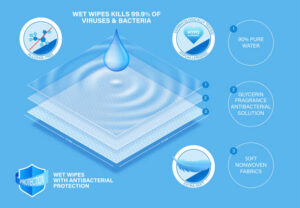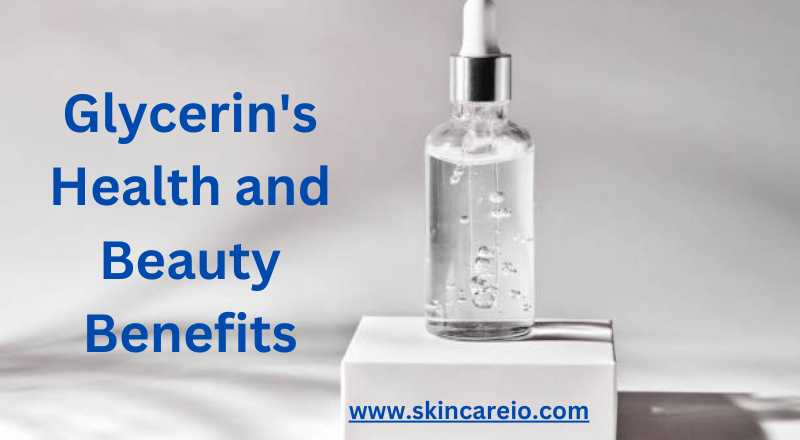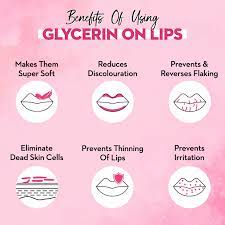Glycerin is a versatile and widely used ingredient in skincare products due to its moisturizing properties. It’s a colorless, odorless, and non-toxic liquid that can help improve the health and appearance of your skin. Glycerin is a humectant, which means it attracts moisture from the air and helps retain it in your skin.
This makes it an excellent ingredient for dry, dehydrated skin, as it can help restore and maintain skin’s moisture balance.
Glycerin can strengthen your skin’s natural barrier, helping to prevent moisture loss and protect your skin from environmental stressors.

This is particularly beneficial for people with sensitive or compromised skin. Glycerin can help make your skin feel smoother and softer by moisturizing and plumping the outermost layer of skin cells, giving your skin a more youthful appearance. Glycerin is generally well-tolerated by most skin types, including sensitive skin.
Read Also: Exploring the Power of Tartaric Acid
It is non- comedogenic, which means it doesn’t clog pores, making it suitable for acne-prone skin. Glycerin may help soothe and speed up the healing process of minor skin irritations, such as cuts, burns, and insect bites.

By keeping your skin well-hydrated and improving its overall health, glycerin can contribute to a more youthful complexion and potentially reduce the appearance of fine lines and wrinkles.
The primary sources of glycerin include:
Vegetable Glycerin (VG):
This type of glycerin is derived from vegetable oils, most commonly soybean, palm, or coconut oil. The process involves hydrolyzing the triglycerides (fats) in these oils through a process called saponification. Vegetable glycerin is a popular choice for many skincare and cosmetic products and is often used in food products as well.

Animal Fat Glycerin:
Historically, glycerin was often obtained from animal fats, such as tallow or lard, through a similar hydrolysis process. However, this source is less common today due to the availability of vegetable-based glycerin and ethical concerns associated with animal-based production.
Synthetic Glycerin:
Glycerin can also be produced synthetically from petrochemical sources, such as propylene or ethylene. Synthetic glycerin is chemically identical to naturally derived glycerin and is used in a wide range of industrial applications.
Uses of Glycerin in various ways for skincare:
- The recommended dosage or concentration of glycerin in skincare products can vary depending on the specific product and its intended use.
- Glycerin is a common ingredient in many skincare formulations, including moisturizers, serums, toners, and creams. Glycerin is often found in moisturizers and hydrating creams.
- In these products, glycerin concentrations typically range from 2% to 10% or even higher. The optimal concentration can vary based on your skin type and the product’s formulation.
- For dry skin, you may benefit from a higher glycerin content. In toners and facial mists, glycerin is used to provide an extra layer of hydration. Concentrations typically range from 1% to 5%.
- Glycerin can also be found in serums, particularly those designed to target specific skin concerns like fine lines and wrinkles. Concentrations in serums can vary but often fall in the range of 2% to 5%.
- If you are making your own skincare products at home, you can adjust the glycerin concentration to suit your preferences and skin type. A common starting point is around 5% glycerin in DIY formulations, but you can experiment to find the right balance for your needs.
- For individuals with very sensitive or reactive skin, products with lower glycerin concentrations may be preferred to reduce the risk of irritation.
Precautions to be taken before using glycerin to the skin:
Glycerin is generally safe for most skin types, but there are still some precautions to keep in mind when using glycerin on your skin to ensure you have a positive experience and minimize the risk of any adverse effects. Additionally, individual skin types and sensitivities can vary widely, so what works best for one person may not be ideal for another.

Before applying glycerin or any product containing glycerin to your face or body, it’s essential to perform a patch test. Apply a small amount of the product to a small, inconspicuous area of your skin (such as your inner forearm) and wait for 24 to 48 hours to check for any signs of irritation or allergies.
If you experience redness, itching, burning, or any adverse reactions, discontinue use. If you have extremely sensitive or reactive skin, you may want to be extra cautious when using glycerin. Consider using products with lower concentrations of glycerin or seeking the advice of a dermatologist.
Read Also:Harnessing the Magic of Alpha Arbutin
If you know you have allergies to glycerin or related substances, avoid using products that contain glycerin or its derivatives.
Pay attention to the other ingredients in the skincare product.
Some combinations of ingredients might not be suitable for your skin type. For example, glycerin combined with certain acids or exfoliants can increase skin sensitivity. Glycerin can increase the skin’s susceptibility to sunburn. It’s crucial to use sunscreen during the day, especially if you use glycerin-containing products in your morning skincare routine.
While glycerin is a powerful moisturizer, using it excessively or without other products to lock in moisture can lead to skin feeling sticky or overly moist. It’s best to incorporate glycerin into a balanced skincare routine. Ensure that you are using high-quality glycerin products. Low-quality or impure glycerin may contain contaminants that can be harmful to the skin.

If you have specific skin concerns, conditions, or allergies, it’s a good idea to consult with a dermatologist before using glycerin-containing products. They can provide personalized recommendations based on your skin’s needs.
Glycerin should not come into direct contact with your eyes. If it does, rinse your eyes thoroughly with water. Make sure your hands and the containers you use to apply glycerin are clean to prevent contamination and the spread of bacteria.
Remember that individual skin reactions can vary, so it’s crucial to pay attention to how your skin responds when introducing glycerin-based products into your skincare routine. If you experience any adverse effects, discontinue use and consult a healthcare professional or dermatologist for guidance on suitable alternatives.

